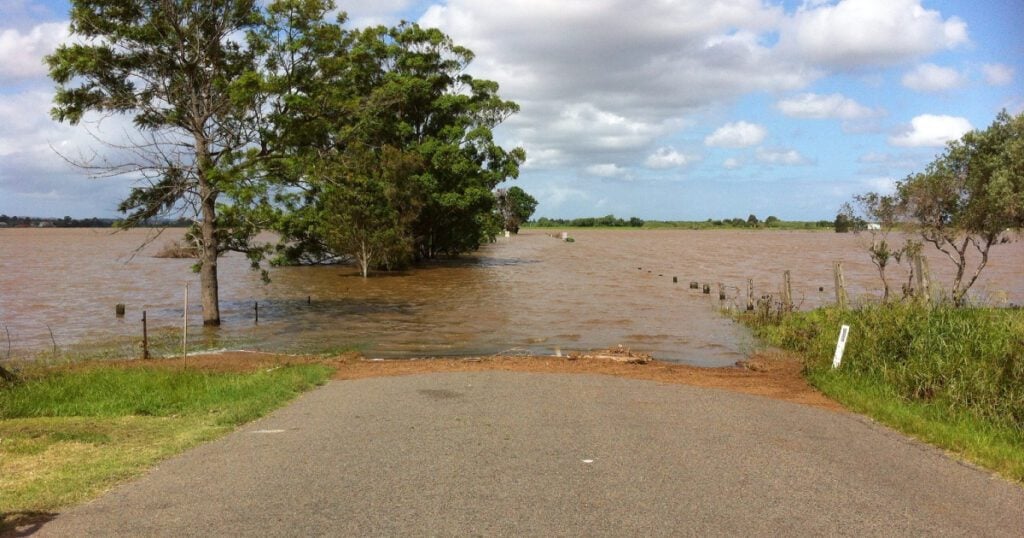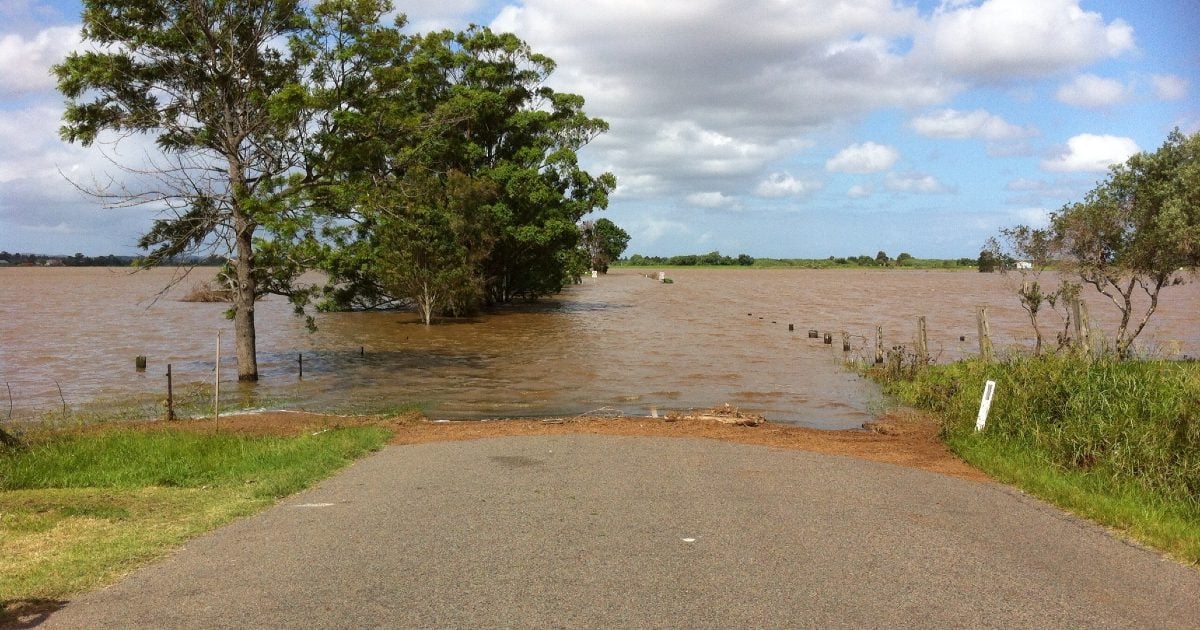How to manage cashflow over Christmas
Everyone loves the middle of summer and spending time with family and friends over Christmas, but it can be a challenging time of year for many small and medium-sized Kiwi businesses.
According to a poll conducted by the Employers and Manufacturers’ Association, more than half of businesses experience cashflow constraints between January and March.
It’s hardly surprising. The period after Christmas is traditionally slow for many companies, with people away enjoying their holidays. Consumers also tend to reduce spending after the expensive Christmas and New Year period.
Businesses can come under pressure for a number of reasons. Earnings will be down if companies shut over the break, while others will feel the pinch if they have paid bonuses before the end of the year.
Considering these facts, it’s understandable that many businesses struggle to manage cashflow and make provisional tax payments on 15 January every year.
Unfortunately, the Inland Revenue doesn’t factor in these seasonal challenges. It expects payments to be made on time and charges taxpayers late payment penalties of up to 20 percent per annum and use of money interest (UOMI) if tax is not received on the due date.
Your options for managing cashflow
What are the best options for businesses that want to manage cashflow and free-up money over the summer?
Tax pooling is IRD-approved and can be used to defer provisional tax payments to a time that suits the taxpayer without incurring late payment penalties and UOMI.
This method is cheaper than using many traditional forms of finance. Rates at Tax Management NZ (TMNZ) start from below eight percent, and tax pooling doesn’t affect existing lines of credit. Also, no credit checks or security are required.
The full amount of finance doesn’t need to be paid back if less tax is owed than first thought. The finance arrangement can be easily extended as well.
How tax pooling can help
Say you want to defer a $5,000 provisional tax payment for six months. You would pay TMNZ a one-off, tax-deductible interest amount and TMNZ would arrange the $5,000 provisional tax payment on your behalf.
The interest amount is based on the amount of tax financed and the period of maturity, so in this instance, it would be roughly $205.
The provisional tax payment is held in an IRD account administered by the Guardian Trust. Guardian Trust instructs the IRD to transfer the tax into your IRD account when you repay the $5,000 principal in six months’ time.
The IRD treats the $5,000 provisional tax as being paid on time once the transfer is processed. It’s that simple.
Ready to ease your seasonal cashflow worries? Get in touch with our team to discuss tax pooling options today.
Find our latest resources on tax pooling and calculating tax using the Standard Uplift method here: https://www.tmnz.co.nz/calculating-provisional-tax/
How you can use tax pooling like a savings account
In business, cash is king, and being able to access funds quickly in a crisis can mark the difference between success and failure. In an unpredictable and volatile world, having the ability to access cash during challenging times can be priceless.
Just ask the taxpayers who were able to access provisional tax payments they had deposited in the TMNZ tax pool when COVID-19 brought the world to a standstill.
With tax pooling, companies can easily request refunds of provisional tax payments they have made at the year to date without waiting to file their tax returns. They can receive their refunds within a matter of days.
Tax can be one of the largest expenditure lines for a business, so flexibility is vital.
In this economic climate, it’s far from ideal to have large sums tied up with the IRD.
What if you can’t access the money in an emergency?
What if your profitability projections trend down over the year, meaning you’re likely to overpay?
For taxpayers with a 30 June year-end, the first instalment of provisional tax is due on 28 November. Every business and sole trader should ask themselves the questions above, especially if their work is seasonal or cyclical in nature.
Businesses should also think about the accessibility of their funds if their income is difficult to predict or fluctuates due to factors such as commodity prices, adverse weather events, or the exchange rate.
Accessible tax money
Depositing tax payments into a tax pool can form part of an effective risk management strategy in times of uncertainty.
Look at it like depositing into a savings account with the added benefit of eliminating late payment penalties and IRD interest. You can still access your funds if you need to, you’re covering yourself for tax time and possibly extending your time to pay.
How depositing provisional tax into a tax pool works
Tax pooling operates with the blessing of the New Zealand tax department. TMNZ has been a registered provider of the service since 2003.
Companies deposit their provisional tax payments into a shared pool instead of directly into their own IRD account.
Each payment is date stamped as at the date it is made into the pool (e.g., 28 November). Funds are held in an account at the IRD. This account is managed by an independent trustee, Guardian Trust.
A taxpayer holds their payments in the pool until it instructs TMNZ to transfer their deposits to their own IRD account.
Taxpayers can request a refund from TMNZ of provisional tax deposits held in the pool at any time without having to file their tax return or an estimate with IRD.
Refunds may be subject to meeting anti-money laundering requirements. (Corporate taxpayers also need to be mindful of imputation credit account impacts when requesting a refund of tax they hold in the pool).
A taxpayer typically instructs TMNZ to transfer their tax deposits to their own IRD account once they finalise their tax return and know the amounts required at each instalment date to satisfy their liability for the year.
As the tax being transferred from the TMNZ tax pool to a taxpayer’s IRD account has been date stamped to when it was originally paid into the pool, IRD recognises it as if the taxpayer paid the whole amount on time.
This remits any IRD interest and late payment penalties showing on the taxpayer’s account.
Access previously paid funds
If you’re short on cash, tax pooling also allows you to temporarily withdraw deposits you hold in our pool.
You can access the amount of provisional tax funds you have deposited (minus an upfront interest cost). You also have the option to restore your deposit at the original deposit date once your cashflow situation has improved.
Buy some time
When preserving cashflow is high on the agenda, you can use a tax pool to defer upcoming provisional tax payments to a date in the future without incurring late payment penalties.
For example, someone with a 7 April terminal tax date could have up to 75 days from that date to settle their provisional tax.
Earn more interest if you’ve overpaid
If you have surplus tax remaining in the pool once you have transferred money to the IRD to satisfy your liability, you can earn interest above the IRD’s credit interest rate by selling the excess tax to other pool members that have underpaid for the year or have received a notice of reassessment from the IRD.
Please note that this is subject to market demand.
The purchasing taxpayer can reduce the interest cost faced on their underpayment significantly when applying this tax against their liability. This also eliminates any late payment penalties.
Overpayers earn more interest while fellow taxpayers pay less. Everyone’s a winner!
Find out more
To learn more about managing your provisional tax, check out our tax finance guide and cashflow management tips for businesses.
Alternatively, please get in touch with our friendly support team if you have any questions. We’re always happy to help.
Manage IRD exposure with corporate tax pooling
With the 28 November and 15 January provisional tax dates fast approaching, now’s the perfect time to talk to larger clients about the benefits of TMNZ corporate tax pooling.
Tax pooling is an Inland Revenue-approved system to help New Zealand businesses manage their provisional tax. Instead of paying the IRD directly, taxpayers can purchase overpaid tax from other tax pool members and pay into the tax pool when it suits them.
As some businesses overpay tax when they have funds to spare, they help to cover other taxpayers that need a bit more time to meet their obligations. We like to think of it as businesses helping businesses.
TMNZ is proud to be New Zealand’s original tax pool, pioneering the concept in 2003. We haven’t looked back since, helping large businesses, SMEs, and sole traders with tax management.
With tax pooling, businesses that can’t meet their provisional tax liabilities can purchase tax from those that have overpaid. This is charged at a lower interest rate than the IRD’s use of money interest charges, and companies also avoid late payment penalties.
There are advantages on both sides of a tax pool. Companies that have overpaid into our pool can also earn more interest on their surplus tax than if they had paid the IRD directly.
Clients that experience volatility or pay substantial amounts of provisional tax (eg: more than $100,000 at each date) can reduce their exposure to use of money interest by paying provisional tax into the Guardian Trust/TMNZ tax pool account at Inland Revenue (IRD) rather than directly into their IRD account.
In summary, here are all of the ways corporate tax pooling is great for large companies:
- Companies earn more interest on surplus tax than they would if they overpaid the IRD.
- Tax can be purchased if businesses have underpaid income tax.
- Tax can be swapped across provisional tax dates to reduce exposure to use of money interest.
- Overpaid tax can be refunded within three to five days — without filing a return.
- Businesses can access TMNZ’s in-house expertise for corporate tax pooling advice on how to optimise their provisional tax payments.
- Money is deposited in the TMNZ tax pooling account at IRD.
What’s more, by using the TMNZ tax pool, you and your clients are also helping to give back to New Zealand. All our profit is invested in the Whakatupu Aotearoa Foundation, supporting social and environmental causes.
Contact us today to find out how TMNZ tax pooling can help your clients.
Five top tips for paying 28 August provisional tax
Are you due to pay 28 August provisional tax?
For many businesses, this will be their first instalment of provisional tax for the 2024 tax year. It’s important to stump up what you owe on this date. Inland Revenue (IR) won’t hesitate to charge steep interest and late payment penalties if you don’t.
If you’re a business owner or operator, here are five useful tips to ensure you’re ready to pay 28 August provisional tax. For agents, you may also wish to share these tips with your clients to help them prepare.
1. Assess your cashflow
Now’s the time to look at the money coming in and going out of your business.
Cast your eyes over your accounts receivable report to see which customers owe you money. If required, ask them if they can sort their bill earlier. Conversely, see if you can buy more time if you owe suppliers money.
If cashflow is tight or you have a better use for the money, keep reading. There’s an option that lets you pay 28 August provisional tax when it suits you.
2. Be aware of the changes
If you’re a safe harbour taxpayer, be aware that despite the rule changes, IR will still charge LPPs at each payment date. You can find out more about the changes here.
3. Know your methods to calculate 28 August provisional tax
It’s important you are aware of the different methods available to calculate your provisional tax payments. For more information about the provisional tax methods available to you, see our Provisional Tax Guide.
4. Consider using tax pooling
An IR-approved tax pooling intermediary such as Tax Management NZ can assist if cashflow is tight. Working with them allows you to pay 28 August provisional tax at a time and in a manner that suits you, without incurring late payment penalties. You can defer the full payment to a date in the future or pay off what’s due in instalments.
Paying via TMNZ also means significant savings on Inland Revenue use of money interest.
TMNZ holds date-stamped tax for you in its IR account. You pay TMNZ at the agreed future date or as and when it suits your cashflow.
5. If in doubt, consult a professional
Do you have any questions about 28 August provisional tax? Seek the advice of an accountant or tax advisor. They can determine the best provisional tax calculation for your business and help you manage your payments and cashflow.
If you wish to learn more about the provisional tax payment flexibility TMNZ offers businesses, email support@tmnz.co.nz or phone 0800 829 888.
Information in this article is correct as at 17/8/22. You should consult with your tax advisor concerning all tax matters. Read our Terms and conditions.
Tax pooling tips: Using the Due Date on myIR statements may needlessly expose you to UOMI
Here we discuss how TMNZ can help you to avoid interest charges with payments at P3.
Unfortunately we're seeing many clients buying tax at the wrong dates. We believe this is caused by the confusing way Inland Revenue displays the Residual Income Tax liability on the myIR statements. If a taxpayer doesn’t meet the safe harbour threshold of less than $60,000 RIT for the relevant tax year, paying tax at terminal tax date will cost you Inland Revenue Use of Money Interest (UOMI).
Why is this?
- Inland Revenue myIR transaction detail statements show the tax due split on what amounts are liable for late payment penalties and what amounts are not.
- As late payment penalties are charged on the lessor of the standard uplift amounts and RIT/3 for all provisional tax dates, they will usually show two amounts for the P3 date. The standard uplift amount will be shown as due at P3, and the balance of current year RIT will be shown as due at the Terminal Tax date.
- However, what is not clear on myIR is that use of money interest will be is charged on the combined P3 total, from P3 to the date the tax is paid.
- So those that are not transferring the combined total at P3 but transferring the amount at the terminal tax date, will incur interest from the P3 date
How can I stop this?
When transferring or purchasing tax from the TMNZ tax pool, you should be doing this for the combined P3 amount at the P3 date. This will mean you avoid interest charges.
Find out more by reading our detailed explanation here or contacting our national support team.
Disclaimer: This article is correct as at 19 April 2022. It is subject to change. TMNZ will update this article as and when it receives new information from IR. We encourage readers to check this page regularly.
Inland Revenue extends tax pooling deadline for COVID-19 impacted taxpayers
Updated: 11 May 2022
Anyone impacted by COVID-19 will now have 183 days after their terminal tax date (or until 30 September 2022, whichever comes first) to settle 2021 income tax arrangements with TMNZ, subject to meeting certain criteria.
Inland Revenue (IR) has announced it has extended the legislative deadline, after recognising the cashflow difficulties some taxpayers face in the wake of the pandemic and the Government’s response to it. There is also relief for taxpayers unable to determine their 2021 tax liability before their tax pooling deadline.
The change means those with a terminal tax date of 7 April 2022 now have until 30 September 2022 to satisfy their tax pooling arrangements for the 2021 tax year. Normally they have just 75 days after their terminal tax date to pay.
For taxpayers with a different terminal tax date, the extension to settle 2021 income tax will apply if their 2021 terminal tax dates fell on or after 17 January 2022. So those with 17 January 2022, 7 February 2022, 7 March 2022 and 7 April 2022 terminal tax dates can request extra time to pay.
TMNZ welcomes IR’s decision, and we were pleased to be engaged in the change process. The decision reflects the impact COVID-19 is having on our clients in relation to settling their 2021 income tax obligations within the required timeframe.
Eligibility criteria when applying to TMNZ
The extension is subject to a taxpayer completing an application form and meeting specific conditions:
- The transfer relates to a contract the taxpayer has with the tax pooling intermediary that is in place on or before 21 June 2022 to purchase tax pooling funds.
- In the period between July 2021 and March 2022 (Affected Period) the taxpayer’s business must have experienced (or for March 2022 be expected to experience) a significant decline in actual (or predicted) revenue related to the impact of COVID-19 which means that in respect of the 2021 tax year the taxpayer was either:
- (a) unable to satisfy their existing commercial contract with a tax pooling intermediary; or
- (b) was, prior to this variation, not able to enter into a commercial contract with a tax pooling intermediary.
- Or, in the Affected Period, the taxpayer has had difficulty finalising their tax return position prior to 31 March 2022 because of circumstances arising either from the imposition of COVID-19 response measures or as a consequence of COVID-19. This could include the impact of a key staff member or advisor having reduced availability, or the financial impact of COVID-19 causing significant disruption to the normal business operations of the taxpayer.
- Any person that wishes to use funds in a tax pooling account to satisfy an obligation for provisional tax or terminal tax for the 2021 income year must provide, or have their tax agent provide on their behalf, their intermediary with a statement in writing confirming the above requirements are met. That the statement must be provided to the intermediary on or before 21 June 2022.
Our recommendation is that you apply for the extension as soon as possible, to avoid undue stress closer to the deadline.
Other important considerations
- The extension deadline will differ slightly for taxpayers with the terminal tax dates 17 January 2022, 7 February 2022 and 7 March 2022. Please be mindful of this when completing the application form.
- A taxpayer’s final payment must be received no later than 183 days past their terminal tax date (or 30 September 2022, whichever comes first) for the 2021 tax year.
- The 30 September cap has been provided by Inland Revenue because the Commissioner’s overriding permissions to create variations to the tax laws ends on this date.
- TMNZ’s interest rates for extension arrangements are the same as they are for other transactions.
The application process with TMNZ
You can find the extension application form on our website, here.
We’ve made it easier for accountants and agents to apply for the extension on behalf of their clients. On the TMNZ Dashboard, just visit the Taxpayer Accounts page using the link in the left hand menu of the Dashboard and now you can simply select the taxpayer/s you’re applying for - their information will automatically appear on the extension form, saving you time and reducing the risk of manual errors.
As always, if you have any questions, feel free to contact your TMNZ account manager or our customer support team. We’re here to help.
Disclaimer: This article is correct as at 4 April 2022. It is subject to change. TMNZ will update this article as and when it receives new information from IR regarding the extension of the 2021 tax pooling deadline. We encourage readers to check this page regularly.
Tech for good: how TMNZ and innovation partners are making life easier for clients and helping the planet
TMNZ clients will benefit from a significantly simplified Inland Revenue data connectivity for the first time. We discuss how it will help, the innovative tech companies involved, and the broader benefits it will bring.

The goal of every good business is to make a positive impact on clients, communities and the environment. As a purpose-led organisation, TMNZ strives to make a difference every day. We’re always looking at new ideas to improve our services and meet customer needs. The latest change marks a major milestone to make Inland Revenue (IR) data connectivity available to all.
In years gone by, accountants and agents have had to deal with multiple systems to access accurate IR data for their clients. The process is often laborious and time-consuming, forcing people to access various platforms and spreadsheets to find the information they need.
That’s set to change. TMNZ has been hard at work integrating its systems with Inland Revenue and technology partners, to provide agents with a seamless way of obtaining data sharing consent from taxpayers. Following the integration, tax agents can easily obtain consents and access IR data, all without leaving our platform.
“We’ve been building on the great relationships with Inland Revenue, and technology partners, APS and GoodSign. We’ve worked closely together to deliver this real-time integration without locking people into other platforms they don’t need. We’re thrilled with the result, which allows accountants and tax agents to save time and get on with their work,” says Eric Troebner, TMNZ Chief Technology Officer.
We’ve created a simple and easy IR integration system.
With TMNZ, clients can integrate IR data on our systems without signing up to third-party software. You won’t have to go through several steps to get the integration done anymore — it’s ready at the click of a button. We have taken things one step further, streamlining the requirements from IR to ensure taxpayers only share their data with trusted parties.
Integration is easy to set up. Previously, accountants had to follow a manual process to ask IR for permission to share taxpayer data and subsequently obtain that permission through letters, updated T&Cs, and other correspondence in a time-consuming chain. We have partnered with GoodSign to remove this obstacle.
- Once a tax agent authenticates their client list through MyIR, a standardised digital consent form can be sent to the taxpayers of their choice.
- The taxpayer signs digitally, and IR integration is instantly turned on. This saves agents considerable time and cuts down on repetitive admin work. By using an innovative digital consent process, we can ensure that the right permissions are in place. The entire process is automated and delivered through APS for the integration and New Zealand company GoodSign.
“Whenever TMNZ reach out regarding a project, we know it’s going to strengthen the user experience for our community and it’s been a pleasure collaborating on another successful initiative with the TMNZ team. Congratulations to TMNZ and GoodSign on this project and on their inspiring contribution towards improving the New Zealand environment and ultimately helping tackle global warming.” says Phillip Yarr, APS Head of Product Management.
We invest 100% of our profits in Whakatupu Aotearoa Foundation to help the environment and community. We’re also proud to partner with companies that help the planet and our communities to maximise the positive impact we have as a business.
GoodSign, an environmentally-conscious eSignature provider, will handle all the digital documents and is fully integrated with our platform. No sign-ups are required, and there are no hidden costs for our clients or their customers.
For every 100 documents sent through GoodSign, the company plants 20 trees. We expect thousands of letters will be sent through GoodSign, meaning a better outcome for the environment and tangible climate action.
“It’s great to be working with TMNZ to help simplify the tax data integration and compliance process for businesses throughout Aotearoa. But it doesn’t stop there - our partnership is also about driving positive change for the environment using GoodSign’s innovative eSignature solution,” says John Ballinger, GoodSign co-founder (and Chief Tree Planting Officer).
“We’re proud to invest 20% of all sales to fund tree planting to help curb global warming. TMNZ and the Whakatupu Aotearoa Foundation are also focused on tackling the climate crisis, and together, we can make more of an impact.”
TMNZ is delighted to offer this new service to clients, available to all firms immediately — and use the power of tech for good.
Contact our support team to take advantage of the easiest IR integration on the market.



Cashflow relief for farmers impacted by flood or drought

Those impacted by flooding in Canterbury or drought elsewhere in New Zealand have another option to manage their cashflow.
It’s called tax pooling.
It lets taxpayers defer their upcoming provisional tax payments to a time that suits them, without incurring interest (currently seven percent) and late payment penalties from Inland Revenue (IRD).
The service – which has been operating with the blessing of the taxman since 2003 – is available through an approved commercial provider such as Tax Management NZ (TMNZ).
The impact of extreme weather
The Government has declared the recent flood in the Canterbury region as a medium-scale adverse weather event.
As those in this part of New Zealand assess the damage and begin the clean-up following the large deluge of rain, a big dry is beginning (or, in some cases, continuing) to bite other parts of New Zealand. The drought has been classified as a large-scale adverse weather event.
Farmers impacted by these contrasting weather events are being encouraged to act early and assess their options if they need assistance.
For those battling drought, some tough decisions around stock and feed will need to be made. In the Canterbury region, flooding only compounds the financial pressure as many were also dealing with drought beforehand.
Cashflow will be important during this difficult period.
Help is available
Managing tax payments will be a key consideration in managing cashflow too.
IRD, to its credit, is exercising some discretion.
It will allow farmers and growers affected by the Canterbury flood to make early withdrawals from the income equalisation scheme.
For those whose current or future income will be significantly affected by drought, IRD will allow late deposits for the 2019-20 income year up to 30 June 2021.
Early withdrawals are also available in the case of a medium-scale adverse event or if someone is suffering serious hardship.
Please note a taxpayer must satisfy certain criteria for IRD to exercise its discretion around the income equalisation scheme.
There's also the option of re-estimating provisional tax.
However, while that allows someone to get a refund of tax they have paid earlier in the year, it does come with some risk.
Free up cashflow by deferring payment of provisional tax
Farmers growers with a May balance date are due to pay their the final instalment of provisional tax for the 2020-21 income on 28 June.
For a small interest cost, someone can use TMNZ to defer this payment.
We make a date-stamped tax deposit to IRD on behalf of a taxpayer on 28 June and the taxpayer pays us when it suits their cashflow.
A taxpayer can either pay the full tax amount at a date of their choosing or enter an instalment arrangement.
When a taxpayer satisfies their arrangement with TMNZ, IRD will treat it as if the taxpayer had paid on time. Any interest and late payment penalties showing on their account will be remitted.
A taxpayer has up to 12 months to pay their 28 June provisional tax with TMNZ.
TMNZ’s interest cost is much cheaper than what IRD charges when someone pays their tax late.
Please click here to register with TMNZ. Alternatively, feel free to contact us if you have any questions.
Bright-line test: Don’t get caught by ‘change-of-use’ rule fishhook

Anyone who lives away from their main home for more than a year will be liable to pay income tax on any profit they make from the sale of a residential property sold within the new bright-line period.
That’s because of the introduction of a ‘change-of-use’ rule that came into effect when the Government amended the legislation earlier this year, in its bid to cool rampant property prices in New Zealand.
For salary and wage earners who are renovating their house, away on secondment or looking to build a property, a hefty and unpleasant tax bill may be lying in wait as a result of this fishhook.
Detailed explanation
Under the bright-line test, an exemption applies if the property a person is selling is their main home.
Prior to 27 March 2021, a property was considered a main home if the owner had lived in it or used it as a main home for at least 50 percent of the time that they owned it.
However, under the new bright-line rules – which apply to a residential property that someone purchases on or after 27 March 2021 and sells within 10 years – homeowners can only be away from their main home for a continuous period of up to 365 days.
Homeowners must treat the days they are away from their main home as ‘non-main home days’.
If someone is away for more than 12 months and then later sells their house within 10 years of acquiring it, the main home exemption will not apply.
This is the 'change-of-use' rule.
It means a person will have to pay income tax on the profit they make from that sale for the period they were not using the property as their main home.
Example
A homeowner sells a property six years after the start of the 10-year bright-line period.
During that six-year bright-line period, they had moved out and rented this house for 15 months while they lived and worked in another part of New Zealand.
Any profit will be split between the 15 months and remaining 57 months during the bright-line period. The homeowner is liable to pay tax on the amount of profit apportioned to the 15-month period.
The impact for salary and wage earners
This has potential – and unpleasant – tax ramifications for salary and wage earners who:
- Renovate their home.
- Live away from their main home due to being on secondment.
- Purchase a section with the intention of building a property, especially if it is going to take more than a year after buying the section to move into their newly built house.
The income a salary and wage earner receives from selling a property is added to their other income sources for that year.
For most, given the eye-watering sums some houses are currently fetching on the market, this will force them into the top tax bracket of 39 percent for that year. The top tax bracket applies to those earning income above $180,000.
There are potential provisional tax ramifications, too.
If the income tax liability from the sale of a property is $60,000 or more, a salary and wage earner will need to pay this by 7 May to avoid incurring IRD interest (currently seven percent) – even if there was no obligation for this person to pay provisional tax during the income year they sell the property.
This is because they fall outside the safe harbour provision.
They can, however, use an IRD-approved tax pooling provider such as Tax Management NZ to reduce this interest cost by a notable amount. The savings can be significant.
They will also enter the provisional tax regime during the following income year due to the previous year's income tax liability being greater than $5000.
Anyone who expects to be away from their home for more than 12 months will need to keep accurate records of the number of days they live away from the property as well as any deductible expenses they wish to claim against the property's sale proceeds.
Seek advice
The rules around the taxation of property are complex.
As always, we recommend you speak to an accountant if you have any questions or wish to err on the side of caution.
Seller beware – IRD bright-line campaign update

Inland Revenue (IRD) will soon begin issuing letters to taxpayers within a month of them selling a residential property.
These will be sent as soon as the tax department identifies a transaction that potentially falls within the bright-line rules, to ensure people are aware of any possible tax obligations.
IRD says initially there will be a couple of catch-up rounds to account for residential property sales from November to June 2021.
From there, they will issue letters monthly as sales occur.
What to do if you receive a letter
In some circumstances, IRD may not be applying the law correctly because they don’t have all relevant facts.
Last year, the department acknowledged it sent letters by mistake to taxpayers whose property transactions did not fall under the bright-line test.
Still, it pays to speak to a tax professional if you are unsure or have any questions because the taxation of property is quite complex.
If you have sold a house and not returned the correct taxes, then you should complete a voluntary disclosure as soon as possible.
This can see the shortfall penalties IRD may seek to impose on the unpaid tax reduced. Shortfall penalties range from 20 percent up to 150 percent of the tax liability, depending on the seriousness of the mistake.
As an IRD-approved tax pooling provider, Tax Management NZ can eliminate late payment penalties and reduce the interest that the taxman may already be charging on the income tax amount owing as a result of a property sale, provided legislative requirements are met.
Please contact us to find out how and when we can assist with tax obligations that arise when a property sale meets the bright-line criteria.
The bright-line rules
The bright-line test means if you sell a residential property within a set period after purchasing it you will have to pay income tax on any profit made through the property increasing in value, unless there is an exemption.
It also applies to New Zealand tax residents who buy overseas residential properties.
Please refer to the table below to see which bright-line period applies.
| If the property was purchased… | Then the bright-line sale period that applies is… |
| On or after 27 March 2021 | 10 years |
| Between 29 March 2018 and 26 March 2021 | Five years |
| Between 1 October 2015 and 28 March 2018 | Two years |
The bright-line test does not apply to houses purchased before 1 October 2015.
Please note the Government has also indicated new builds acquired on or after 27 March 2021 will continue to be subject to the five-year test.
Exemptions
Generally, the bright-line property rule does not apply to a sale of property that has been your main home, inherited property, or if you're the executor or administrator of a deceased estate.
It's important to keep in mind that the main home exemption is not infinite, and can only be used twice in a two-year period.
However, different rules apply to someone's main home depending on when it was acquired.
Prior to 27 March 2021, a property was considered a main home if the owner had lived in it or used it as a main home for at least 50 percent of the time that they owned it.
Recently, though, the Government has introduced a ‘change-of-use’ rule.
This states that, after a sale, income tax will be payable for any period of more than 12 months if the property was not being used as someone's main home.
Visit IRD’s website for more information on the bright-line test and other property rules.









